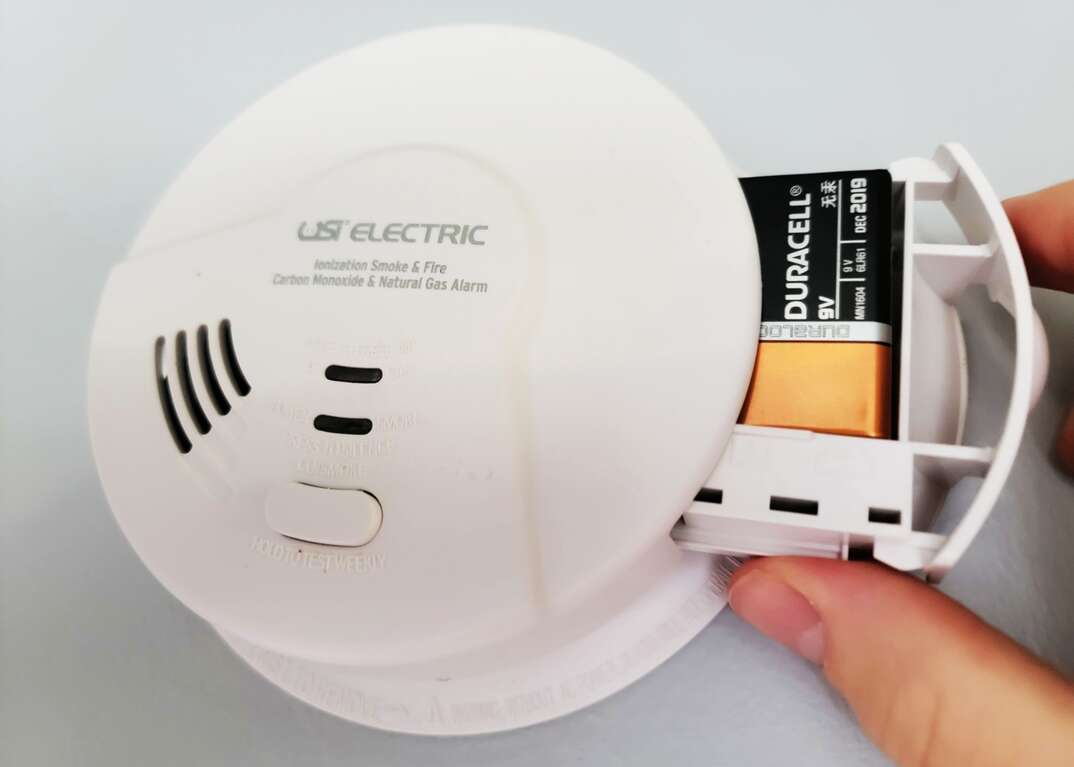HomeServe Recommends Homeowners "Fall Back"
Seasonal transition is the perfect time for maintenance chores to ensure your home’s safety and efficiency
NORWALK, Connecticut – November 2, 2025 – It’s time to tackle those overdue home maintenance tasks! With the clocks turning back, it’s the perfect time to prepare your home for winter while boosting safety and efficiency.
HomeServe, a leading provider of home repair solutions, recommends homeowners start with tasks like draining your water heater and adjusting the temperature, checking safety and fire detectors and extinguishers, and cleaning your chimney. Here's why they matter and how to get started!

1. Draining Your Water Heater and Setting the Temperature
Over time, sediment accumulates at the bottom of your water heater tank, causing issues such as overheating and corrosion, reducing its efficiency and lifespan. That buildup creates an insulating layer that forces the water heater to work harder, increasing energy consumption and driving up your home energy bill.
Heating water accounts for approximately 18% of a household's energy bill, just behind your HVAC system. Draining the tank and removing sediment deposits makes your water heater more efficient.
To DIY this task, follow these steps:
- Turn Off the Power: For electric water heaters, flip the circuit breaker; for gas, switch the valve to "Pilot" or "Off."
- Cool and Drain: Allow the water to cool, turn off the cold water supply, and attach a garden hose to the drain valve and drain.
- Flush the Tank: Briefly turn the cold water supply on to flush out residual sediment, then close the drain valve and refill the tank.
- Restore Power: Turn the power back on for electric or relight the pilot light for gas heaters (which is not as hard as it may sound; get the step-by-step details here).
- Check for Leaks: Once the tank is refilled, carefully inspect for any leaks. Tighten connections if necessary.
- Adjust the Thermostat: Set the thermostat to your desired temperature, ideally around 120°F for optimal energy efficiency and safety.
- Test the System: Allow the water heater to operate for a few hours and check if hot water is flowing correctly from your faucets.
Setting your water heater’s temperature to 120 °F reduces energy costs, prevents scalding and hinders bacteria growth. Each year, approximately 3,800 scalding injuries occur across the U.S. due to water heaters being set too high, according to the Burn Foundation. Setting the temperature to 120°F can also save 6% to 10% on your water heating costs annually.
2. Fire Safety: Detectors and Extinguishers
Proper upkeep of smoke detectors, carbon monoxide (CO) alarms and fire extinguishers is essential.
- Change Batteries: So you don’t forget this important task, coincide replacing batteries in smoke and CO detectors twice a year with setting your clocks back in the fall or forward in the spring.
- Test Monthly: Regularly press the test button to ensure functionality and replace detectors every 7-10 years.
- Strategically Position Fire Extinguishers: Fire extinguishers should be in the kitchen, near bedrooms and in the garage.
- Check Fire Extinguishers: Inspect the pressure gauge, check the pin and seal, examine for damage and shake monthly to prevent powder settling.
In 2023, home fires in the U.S. accounted for approximately 3,670 deaths and over 13,000 injuries. Similarly, carbon monoxide poisoning results in more than 400 deaths and sends over 100,000 people to the emergency room annually. According to the National Fire Protection Association (NFPA), the risk of dying in a home fire is reduced by 60% in homes with working smoke alarms and CO detectors.
3. Chimney and Flue Cleaning
If you have a fireplace, it’s essential to have a professional clean your chimney or flue. An annual cleaning is crucial to preventing fires and ensuring proper ventilation. Here's why you should have this important maintenance task done:
- Prevent Chimney Fires: The creosote that can buildup in your chimney over time is a major fire hazard.
- Ensure Ventilation: Clearing blockages, like nests or debris, prevents carbon monoxide exposure.
- Improve Efficiency: A clean chimney allows for effective smoke and gas exit, enhancing fireplace performance.
According to the NFPA, failure to clean chimneys and flues is a leading cause of heating equipment fires. An annual inspection and cleaning by a professional can help identify and rectify issues like cracks or structural damage, ensuring your chimney is safe and fully functional.
Can you clean your own chimney? It’s possible but not recommended – you would need to purchase specialized equipment and work from the roof, which can be dangerous. Additionally, a professional will inspect the interior of the chimney for cracks or damage to the liner, identifying repairs that need to be made for safe operation and possible buildup of level 2 or 3 creosote, which requires specialty cleaning.
There are still some smart tips to keep in mind once you start using your fireplace this winter:
- Fireplace Barriers. Use screens to prevent embers from escaping into your home and install barriers to keep children and pets at a safe distance. Maintain at least three feet of space between the fire and any flammable materials.
- Fire extinguishers. Keep an extinguisher near the fireplace and make sure you and others know how to use it. Don’t leave a fire unattended.
- Be Careful What You Burn. Only use dry, seasoned hardwood to reduce smoke and avoid using flammable liquids to start fires. Spillage and unanticipatedly intense or large fires can be dangerous.
By completing these fall maintenance chores, you’re not just preparing your home for the coming winter but also investing in its longevity and safety. So, make the most of this season's transition!